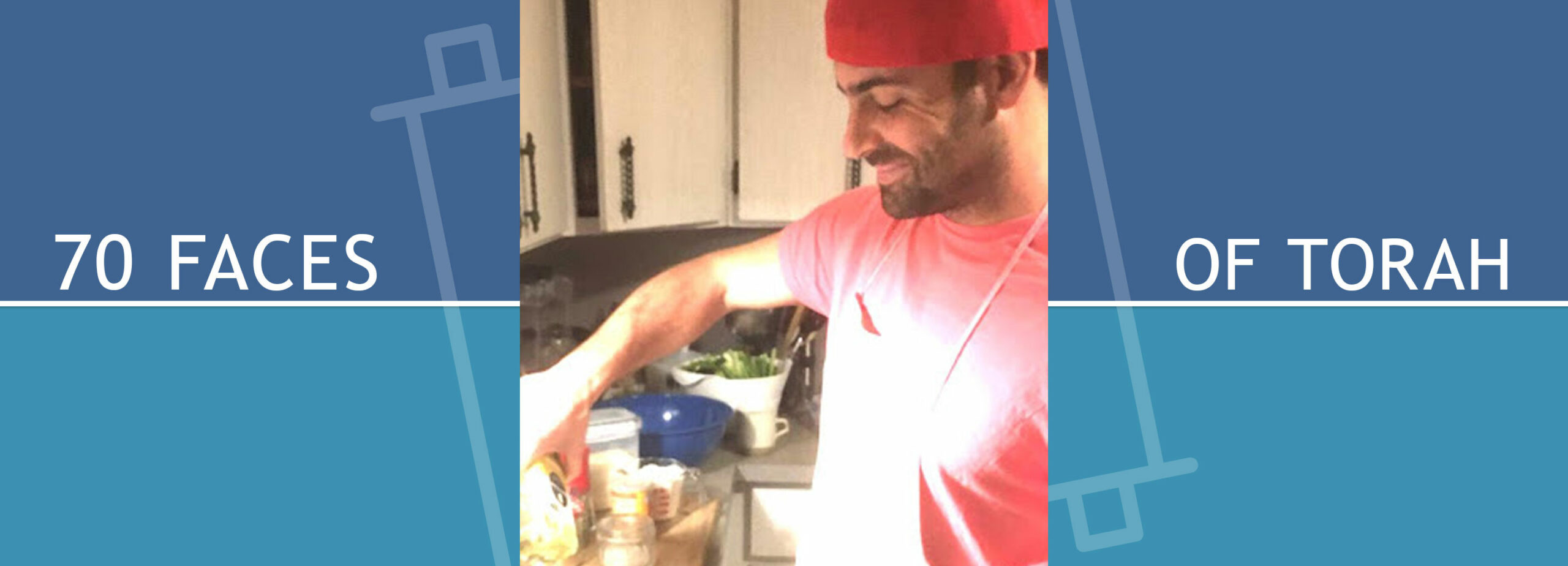Jewish learning Van Halen, Brown M&Ms, & Parashat Terumah

Parashat Terumah (Exodus 25:1-27:19)
Have you heard the mashal (parable) about Van Halen and the brown M&M’s?
For those who haven’t:
In 1982, Van Halen World Tour included a 53-page typewritten rider to their touring contract. In addition to stipulating that promoters provide the group with “herring in sour cream,” (not the subject of this post, but definitely worth thinking more about), and four cases of “Schlitz Malt Liquor beer (16 ounce cans),” the rider’s “Munchies” section famously included this caveat:
“M&M’s (WARNING: ABSOLUTELY NO BROWN ONES)”
In the rock community, there’s a makhloket (disagreement) about this infamous caveat. Did Van Halen’s prohibition on brown M&Ms represent the entitlement and excess of rock and fame? Or, was it an ingenious and useful litmus, allowing Van Halen to quickly verify whether or not its promoters read and took care to fulfill all of the obligations in its rider (many of which had higher stakes for their performance than the munchies section)?
One could ask similar questions about Parashat Terumah.
In our parashah, more ink is spilled on the construction of the Mishkan (Hashem’s tour bus?) than is spilled on the creation of the entire universe in Bereshit 1. “Exactly as I show you—the pattern of the Tabernacle and the pattern of all its furnishings—so shall you make it. They shall make an ark of acacia wood, two and a half cubits long, a cubit and a half wide, and a cubit and a half high. Overlay it with pure gold—overlay it inside and out—and make upon it a gold molding round about…” (Ex 25 9-11, JPS 2006). The entire parashah continues in this way, with exacting instruction.
What are we to make of the detail with which Hashem instructs Moses and the Israelites to construct the Mishkan?
To be honest, my initial reactions to both of these stories (Van Halen’s M&Ms rider and Hashem’s Mishkan commandments) were fairly dismissive. Sometimes, I experience glut-of-detail as arbitrary or numbing — boring at best, and at worst, a sort of passive weaponization of minutiae for oft-unsavory ends (class maintenance, for example, and all manner of signaling in-group and out-group status).
But I began to soften my position as I took a closer look at the why behind all of Hashem’s detailed architectural requests in Parashat Terumah.
וְעָשׂוּ לִי מִקְדָּשׁ וְשָׁכַנְתִּי בְּתוֹכָם
Have them make for me a sacred place that I may dwell among them (Exodus 25:8).
I softened because, while I can find it difficult to get excited about the particulars of constructing ritual objects (and if I’m being completely honest, ritual observance), the construction of and care for dwelling places—home-making—is a cause I can get behind. I spend inordinate amounts of time arranging and rearranging the plants in my room, my books, where I keep my keys, my phone. I love my bed, its quilt throw and home-sewn pillow cases, the nooks where I keep my art supplies and school supplies. I stock tasty leftovers in the fridge. Paying close attention to these details doesn’t feel boring at all, it feels nourishing.
~
It’s often the case that materialism is cast as an antithesis to spiritual or religious life. But, alongside our parashah, there are many who make the opposite claim.
The architect and author, Christopher Alexander, is one example. Over and over again, Alexander comes to the same central idea—there’s something essential and wonderful about being alive that can be both expressed through and supported by the way we organize and ornament the materials in our lives.
Here’s a passage from his chapter on “The Process of Repair” in The Timeless Way of Building:
When things are first built, the gaps between the parts are often left unwhole.
In the kind of world we have today, almost half the places in a building or a town are places “in between” the places where you are meant to be.
The dark narrow space between two houses, the corner of the kitchen which no one can reach…
And there are more remarkable examples, where spaces are actually intended to be left over.
Think about the streets with cars parked on them, parking lots, long corridors, waiting rooms… All these places are made with the mistaken notion that you are only there in limbo, in between moments of living—as if they were way-stations between the few places where you are actually meant to be alive.
But these gaps must be healed and made as whole as the parts on either side of them…
Slowly, at every level, the arrangement of wholes becomes so dense that there are no gaps between the wholes: every part, and every part between two parts, is whole.
I found this passage to be particularly resonant with our parashah, in which Hashem initiates a massive and elaborate building project specifically at a moment in which the Israelites are bamidbar, are in the wilderness of “between.”
This, then, I think, is the radical commandment of Parashat Terumah: to marshal the materiality of our environment, of our lives—to adorn densely, to care for, to celebrate materiality and through materiality—wherever we are—to make spaces that court the divine, spaces in which Hashem can dwell among us.
Please leave any feedback you’d like to share with the author here.
David Mahfouda (he/him) is a rabbinical student and teaching fellow at Hebrew College, and recent student rabbi at Congregation Or HaTzafon in Fairbanks, Alaska. Prior to attending Hebrew College, David was an artist and curator at the Proteus Gowanus Gallery in Brooklyn, where he co-founded the Fixers Collective—an anarchist repair community that gathered weekly to fix broken things. David was also the cofounder and CEO of Bandwagon, an environmental tech company that organized shared taxi rides from NYC airports. David really loves gathering (people), and practice (all kinds, spiritual, Jewish, athletic, artistic, etc.), and believes that his artistic and technical inclinations stem from deep-rooted Jewish values around interdependence and redemption. In addition to rabbinical school, David loves cooking, hiking, and singing—and he’s excited to be a contributor to 70 Faces of Torah.



